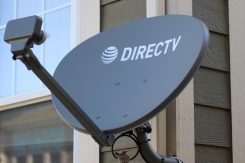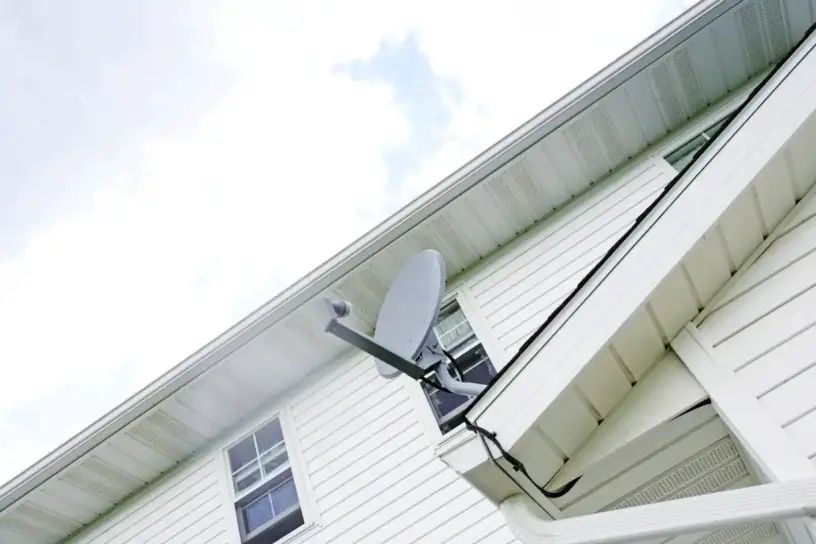By The TV Answer Man team
The TV Answer Man has a diverse audience with readers coming to the site to read everything from the latest programming coming to streaming services to tips on how to improve your TV picture and save money while choosing your TV providers. But there’s no doubt that our base audience consists of satellite subscribers, some of whom remember Phillip Swann (a.k.a. The TV Answer Man) from the days when he was editor of Satellite DIRECTV magazine more than two decades ago. Swann has covered DIRECTV and Dish now for nearly three decades and we arguably provide more coverage here of the satellite TV biz than any other site. Consequently, we are often asked how much longer does the satellite TV industry have? With the advance of cord-cutting and new technologies, how long can DIRECTV and Dish stay in business. Here’s our take:

The Current State of Satellite TV
Satellite TV has been a popular choice for decades due to its wide reach and extensive channel offerings. Companies such as DIRECTV and DISH Network have dominated the market, beaming signals from geostationary satellites to millions of subscribers’ homes. The appeal of satellite TV lies in its ability to provide high-quality, uninterrupted broadcasts even in remote areas without access to cable infrastructure. But the satellite TV industry has lost millions of subscribers over the last several years and the decline is not slowing for five reasons.
Challenges Faced by Satellite TV
1. Internet Streaming Services
One of the most significant challenges faced by satellite TV is the rise of internet streaming services like Netflix, Hulu, Amazon Prime Video, and Disney+. These platforms offer on-demand content, original programming, and live TV options, directly competing with satellite providers.
2. Cord-Cutting Trend
The cord-cutting phenomenon has accelerated in recent years as consumers increasingly opt to ditch traditional cable and satellite TV subscriptions in favor of more affordable and flexible streaming alternatives.
3. Technological Advancements
With the continuous advancement of technology, internet bandwidth is improving, enabling faster and more reliable streaming experiences. Additionally, 5G networks are becoming more widespread, promising a more robust infrastructure for delivering video content over the internet.
4. High Operating Costs
Maintaining and launching satellites into orbit is a costly endeavor. As satellite TV providers face stiff competition, they struggle to balance their expenses with the revenue generated from subscriptions.
5. Local Content and Licensing
Like cable TV operators, satellite TV faces challenges when broadcasting local content in different regions due to licensing issues, accelerating costs of programming acquisition, and government regulations, which limits their appeal in some markets. DIRECTV and Dish have had to raise their prices to such a high level that many subscribers have defected, seeking cheaper fare from companies such as Netflix.
The Prognosis for Satellite TV
Considering the current landscape and challenges, it is evident that satellite TV is facing an uphill battle. However, it’s essential to acknowledge that it won’t vanish entirely in the near future. DIRECTV and Dish still have around 20 million satellite TV customers. That’s a powerful audience at a time when TV viewership is splintered in numerous segments thanks to streaming.
Satellite TV providers are also not oblivious to the changing market dynamics. To survive, they have started adapting their business models. Both DIRECTV and Dish have ventured into the streaming space, offering their own on-demand platforms and internet-based services (DIRECTV Stream and Sling TV) to complement their satellite offerings. They are also exploring partnerships with content providers and diversifying their content libraries to remain competitive.
The Predicted Timeline
It is challenging to determine an exact timeline for satellite TV’s potential decline or exit from the market. Some experts predict that it could take around a decade or more before satellite TV’s impact significantly diminishes, depending on various factors:
1. Technological Innovations
If satellite TV providers can adopt cutting-edge technology, such as low-earth orbit (LEO) satellites, they may overcome some of the existing challenges and extend their longevity.
2. Consumer Behavior
The pace at which consumers shift from traditional TV services to streaming platforms will play a vital role in determining how long satellite TV can sustain its market share.
3. Competition and Consolidation
The level of competition and potential mergers or acquisitions in the industry will shape satellite TV’s future. If Dish and DIRECTV can ever successfully merge, it will allow the newly formed company to stay in business indefinitely compared to both satcasters struggling to operate independently.
Have a question about new TV technologies? Send it to The TV Answer Man at swann@tvanswerman.com Please include your first name and hometown in your message.



As a rural consumer I alway enjoyed the extensive level of programming of Dish and Directv. I am a current subscriber of Directv Stream. I think there are two basic reasons people leave. 1. No contracts. 2. No equipment rental fees monthly. Content on streaming is good initially but becomes stale for a specific streamer, I.e. Hulu. No contract makes it easy to shuttle between options. No equipment rental is a real saver. If you have multiple TVs in the home fees get expensive fast. I think it’s one reason DTV Stream is trying to incorporate their new set too box.
yeah but theres a fee for the gemini box and a 2 year contract !
We have a home in a “rural” area within 50 miles of DC and only with Starling have we been able to get “reliable” broadband. This is because, despite the state handing the county $40m dollars to string fiber optic along our power lines, the Board of Supervisors hired a crony as the contractor to do the work.
Nothing has happened now 2 years into the process. When I call the supervisor in charge, not return calls. When I send emails to the broadband authority, crickets.
If and until this issue gets resolved, and I have no reason to think this entire scenario plays out in rural counties around the country, DirecTV will be the only game in town. That is, until Starling has enough satellites in orbit for Broadband to be a thing for most.
Never underestimate the ability of crooked local politicians to prevent anything good from happening.
I have DTV Streaming. Switched in May after having DTV Sat since 1995. Sat is better in some ways. Streaming tech still has inconsistencies that need to be addressed and improved imo. Live events (football mainly) will have to improve their reliability to not piss off fans.
Dish and DirecTV Satellite do not have 20 Million as Swann writes, that number includes D Stream, Uverse, Sling.
Both companies together have, roughly, 15 Million Subscribers.
In 2016 ( just Satellite), Dish had almost 10 million, DirecTV had almost 22 million, so both together have lost more then half of their Satellite Subscribers, DirecTV more losses then Dish.
I’m counting the combined subs of both companies, sat, stream and U-verse.
My family has been Directv subscribers since the satellite went up in the mid 1990’s. As we reside in rural Indiana, it has been our best choice for quality uninterrupted TV service. As prices have risen through the years, I have called Directv and asked for and received a price break, usually around $50 per month but a couple of times $100 per month that lasts one year. Then I have to call and ask again. They call this the loyalty discount and can be received by asking for the loyalty department.
Football season is in jeopardy as both the local FOX and CBS channels are in a contract dispute with Directv. Hope this gets settled sooner rather than later